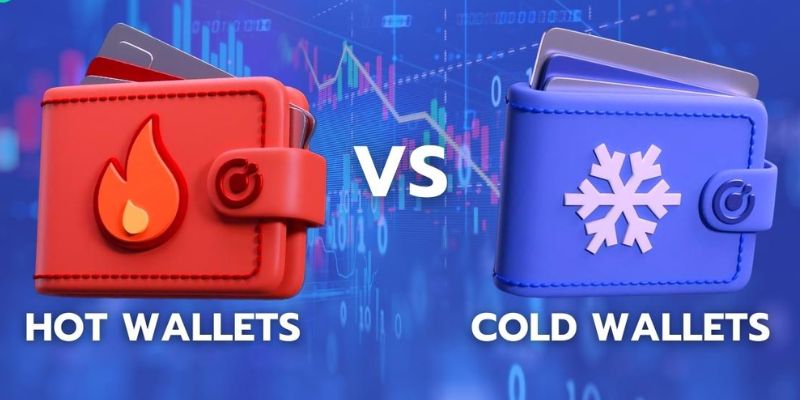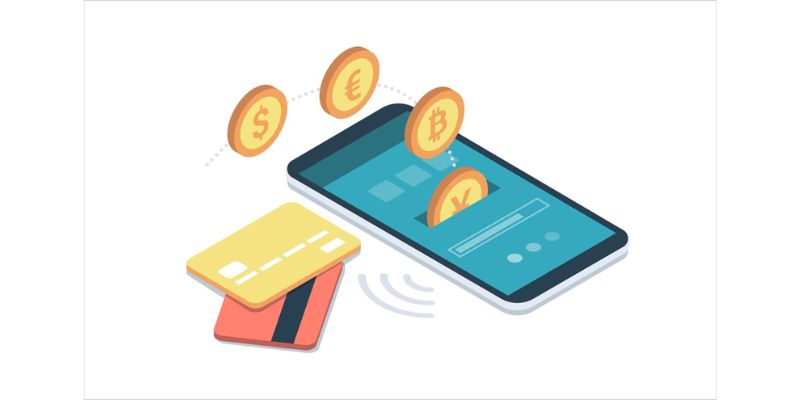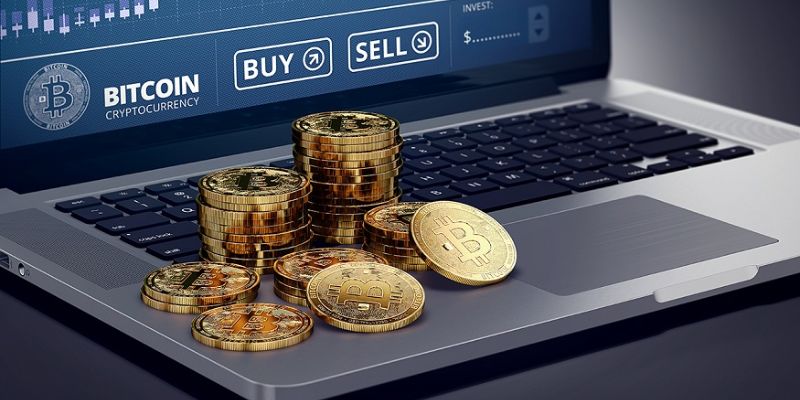Hot Wallets vs Cold Wallets: A Beginner’s Guide to Safer Crypto Storage
Cracking the difference between hot wallets and cold wallets for beginners? Hang tight, fellow crypto enthusiast. You’ve stepped into your first major decision in digital currency – safekeeping your assets. Hot wallets buzz with easy access, making them a go-to for active traders. Yet, they dance on thin ice with security risks. On the flip side, cold wallets lock down your crypto in a fortress, away from hacking hands but also away from your daily coffee shop payment. With this guide, you won’t just grasp their key traits–you’ll learn to master them. Ready to make a smart, informed wallet choice? Let’s dive in.
Understanding the Fundamentals of Crypto Storage
Distinguishing Between Hot and Cold Wallets
Let’s dive into understanding crypto wallets. Simply put, wallets hold your digital money, just like a real wallet! A hot wallet connects to the internet. This means you can easily get to your crypto for day-to-day spends. But, hot wallets can be risky since they’re online and hackers might target them.
A cold wallet, on the other hand, is not connected to the internet. It’s like a super-safe that’s less easy to crack open. Cold wallet benefits include keeping your digital money away from online thieves. This makes them perfect for holding onto crypto for a long time.
Exploring the Variety of Wallet Types Available
When you start storing digital currency, you’ll see lots of options. Hot wallets include apps on your phone or desktop, and hot wallet platforms on the web. They are super handy but remember hot wallet risks like theft and hacking.
Cold wallets are things like hardware wallets (think a small device like a USB stick) or paper wallets (yes, your crypto info on a piece of paper!). They’re not as quick to use, but they give strong cold wallet protection.
So, think about what matters most to you. If you want quick access for trading or buying, a hot wallet might be best. If you’re in it for the long haul, go cold. Always back up your wallet info to be safe from losing access to your crypto.

Hot Wallets: Convenience and Risks Unveiled
What Makes Hot Wallets Accessible for Daily Use?
Hot wallets rule the online space. They let you store, send, and get crypto with ease. Picture being in a shop and paying with digital money from your phone. That’s hot wallet magic! They’re like your everyday wallet, but for cryptocurrency. You can reach them anywhere, any time, just needing the internet.
So, if you’re about to grab a coffee, and you want to pay with Bitcoin, a hot wallet has your back. With apps or online services, your payments are quick and stress-free. They make dealing with digital money a breeze for all.
The Potential Security Risks of Hot Wallets
Now, let’s talk risks. With great ease comes great caution. Hot wallets live online, which means they’re more open to attacks. Thieves love to sneak into online spots. A lost phone or a virus could spell trouble for your crypto stash. Think of a hot wallet like leaving your house unlocked—it’s handy to come and go, but it’s easier for someone to slip in.
You might hear stories of people losing their coins to hackers. This happens when security gets weak. It’s like an open door, and crooks take their chance. This is why you hear about crypto hacks and theft often tied to hot wallets. But don’t let this scare you! It’s all about being smart with your choices.
Choosing a hot wallet means you trade some safety for quick access. It’s fine for money you might use day to day, like to buy that coffee or a book online. But for your big savings, the ones you don’t touch often? They belong in a cold wallet—safe and sound, away from online dangers.
Remember those keys we talk about in crypto? Your wallet has two—the public one is fine to share, like your home address. But the private key? That’s your secret passcode. In hot wallets, they stay online, which flips open the window to risks. Take care of these keys like they’re golden. Mess up here, and your coins could vanish.
By now, you’re catching on—hot wallets are nifty for quick use but risky if you’re not careful. Before choosing one, dig into reviews. Look at what other customers say. And always check how they guard your keys and transactions. Solid wallet encryption methods keep your secrets safe from peeping eyes.
Peek into your lifestyle and see how much you’ll trade. If it’s a lot, then maybe a hot wallet fits. But remember, never store more coins in a hot wallet than you can afford to lose. For the stuff you want to keep long term, push it into a cold wallet.
Look, I get it. Wrapping your head around hot wallets and how they work can feel overwhelming. There’s lots to think about. But take it slow, and you’ll find it’s less about fear and more about being smart. Use hot wallets for daily stuff and keep them light. Save the heavy security for big crypto savings with cold storage solutions. It’s balancing convenience with care, and it’s a smart way to keep both your coffee money and your nest egg secure.

The Fortified Realm of Cold Wallets
How Cold Wallets Provide Enhanced Security
When we talk about crypto wallet security, one heavy hitter stands out: cold wallets. What is a cold wallet, you ask? It’s a way to store digital currency away from the risky online world. This means hackers have a tough time getting their hands on your coins. Unlike hot wallets explained earlier, which are always online, cold wallets are offline. That’s a big deal because being online all the time opens doors for bad folks to sneak in. Cold wallet benefits include keeping those doors shut tight.
Cold wallets come in a few shapes. Some look like USB drives; we call these hardware wallets. They hold your coins’ private keys, which you must guard like treasure. Without the key, the treasure chest won’t open. Other cold wallets might even be paper with codes printed on them. No tech needed – just paper in a safe!
The beauty of cold wallets is in their strength against attacks. Think of them as superhero vaults for your digital cash. Secure crypto storage is what they do best. They can’t be hacked remotely because they don’t chat with the internet. To crack a cold wallet, a thief would need to get their hands on it physically, which is much harder.
Choosing the Right Cold Storage Solution
Picking where to stash your crypto can be tricky. There are many cold storage solutions, and as a beginner, you might wonder which is the best. No worries! I’ll help you figure it out. First off, ask yourself, “How often will I use these coins?” If you’re in it for the long haul, a hardware wallet is a solid choice. For cold wallet safety, they’re top-notch.
Now, if you’re thinking, “That sounds good, but how do I even set one up?” Don’t sweat it. Setting up a cold wallet isn’t a puzzle for wizards. You buy the device, follow its setup steps, transfer your coins, and keep it somewhere safe. That’s it!
For those who want extra peace-of-mind, consider how to back up your cold wallet. What happens if it gets lost or damaged? With a backup, you can recover your crypto. Hence, a backup’s importance can’t be overlooked.
Deciding how to store your keys also matters. A good tip? Don’t put all eggs in one basket. Spread your backup details across different safe spots that only you know of. This reduces the chance of losing everything if something goes wrong.
Understanding crypto wallets might seem like a mountain to climb. But with the right information, it gets easier. Cold wallets might seem less convenient than hot wallets at first glance. But for protecting your investment against crypto hacks and theft, they’re worth it.
Protecting your digital coins means more than choosing hot versus cold wallets. It’s about picking what fits your life. And remember, even the most secure vault needs a wise guardian. Be smart about where and how you keep your cold wallet, and your digital wealth is more likely to stay safe!

Strategies for Selecting and Setting Up Your Crypto Wallet
Steps to Setting Up Secure Wallets for Beginners
When picking out your first crypto wallet, think simple. It’s all about what you plan to do with your crypto. Do you want to use it a lot, or keep it safe for a long time?
First, get to know hot and cold wallets. A hot wallet is online. It lets you access your funds quickly. It’s handy for buying and selling crypto. A cold wallet is offline. It’s like a safe for your digital money.
For a hot wallet, start with a trusted platform. Look for one with good reviews and strong security. When setting it up, create a tough password. Write it down, but keep it away from prying eyes.
For cold storage, buy a hardware wallet from a known brand. Think of it as a USB stick for your crypto. Once you buy it, follow the instructions to set it up. Just like with hot wallets, pick a strong password.
Best Practices for Protecting Private Keys and Public Addresses
Your private key is like the key to your house. Only you should have it. Once you have a wallet, the big task is to protect this key. If someone else gets it, they can steal your crypto.
Always back up your wallet. If your computer breaks, this means you won’t lose your crypto. The backup can be on paper or a USB stick. Store it in a different place from where you live. Think of a bank safe or with a trusted family member.
Be careful with your public address, too. This is what you share to receive crypto. But don’t let people see your transaction details. They might figure out how much crypto you own.
Keep your software updated. Whether it’s your wallet or your computer, updates fix security holes. This keeps your crypto safer.
Steer clear from scams. Never tell your private key to anyone. If a service asks for it, they’re probably trying to steal from you.
For cold wallets, write down the recovery phrase. Put it somewhere very safe. If your hardware wallet ever gets lost or damaged, this phrase is your only way back in.
Using these steps and tips, you can start your crypto journey on the right foot. Choosing and setting up a wallet isn’t hard. It’s about being careful and understanding what each wallet offers. Hot or cold, pick what fits your needs and be diligent to keep your digital treasure secure.
In this post, we’ve tackled the big world of crypto wallets. We started by breaking down the basics—how hot wallets are handy but risky, and cold wallets are secure but not as quick to use. We dug into different wallets to fit your needs, from online ease to offline shields. Then, we showed you that hot wallets can be simple to use, but we mustn’t ignore their security flaws. On the flip side, cold wallets are like safes for your digital cash, giving you top-notch security. At the end, we walked you through choosing and setting up your wallet, with a focus on keeping those keys safe.
To wrap it up, remember that picking the right wallet is key for safe and easy use of your crypto. Always balance convenience with security, think about what fits your lifestyle, and protect your keys like treasure. Stay smart, stay safe, and your digital money will stay yours!
Q&A :
What is the basic difference between hot wallets and cold wallets?
Both hot wallets and cold wallets are used to store cryptocurrencies, but they differ significantly in terms of their connection to the internet. Hot wallets are connected to the internet, making them more convenient for frequent transactions but also more susceptible to hacking and cyber theft. Conversely, cold wallets are offline storage solutions, which means they are much less prone to online hacking attempts, providing a higher level of security for long-term holding of digital assets.
How do beginners choose between a hot wallet and a cold wallet?
Beginners should choose between a hot wallet and a cold wallet based on their needs and concerns about security and convenience. If you frequently trade or spend cryptocurrencies, a hot wallet’s easy accessibility might be more suitable. However, if you intend to store large amounts of cryptocurrencies or keep them for a long period without frequent access, a cold wallet’s enhanced security features might be the better option. Evaluating one’s investment strategy and risk tolerance is crucial when making this decision.
Are cold wallets more secure than hot wallets?
Generally, cold wallets are considered more secure than hot wallets because they are not connected to the internet and thus, are immune to online hacking attacks. They store cryptocurrencies offline on hardware devices or paper, removing the risk of cyber theft that hot wallets face. However, physical loss or damage to the device in which the cold wallet is stored can still pose a risk, so proper physical safeguards should be in place.
Can I transfer funds from a cold wallet to a hot wallet?
Yes, you can transfer funds from a cold wallet to a hot wallet. To do this, you’ll need to connect your cold wallet to an internet-enabled device or manually enter its information into an online service. This process typically involves scanning a QR code or entering a key. Once connected, you can then initiate the transfer to your hot wallet. It is important to perform this action carefully and securely, as the funds are exposed to the internet’s risks during the transfer.
Is it necessary to use both hot and cold wallets?
It is not strictly necessary to use both hot and cold wallets, but using both can provide a balance between security and convenience. This strategy, often referred to as a “hybrid approach,” involves storing a majority of your funds in a secure cold wallet while keeping a smaller, more manageable amount in a hot wallet for everyday transactions. This allows users to benefit from the security of cold storage and the accessibility of a hot wallet simultaneously.
